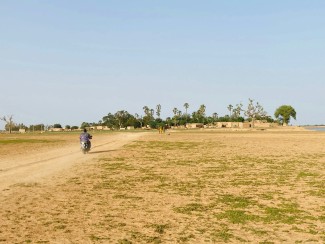This year’s WTO Aid for Trade Global Review takes place against the backdrop of many simultaneous crises affecting the multilateral trading system. It is against this background that WTO will launch the results of the 2022 joint OECD-WTO monitoring and evaluation exercise.
The COVID-19 pandemic continues to disrupt the global economy. Rising public debt levels, inflationary pressures, notably in food and energy markets mean the outlook to developing countries, and especially least-developed countries is at best uncertain. Notwithstanding these immediate difficulties, developing and least-developed countries continue to face a range of supply-side and trade-related infrastructure obstacles which constrain their ability to participate in international trade.
Trade continues to play an important driving force not just of economic growth, but also poverty alleviation. Recognizing the role that trade can play in development, the WTO Aid-for-Trade Initiative seeks to mobilize resources to address trade-related constraints identified by developing and least-developed countries. But against the backdrop of multiple crises affecting the world economy, this task is challenging.
Under the theme "Empowering Connected, Sustainable Trade", the publication analyses the changes in Aid for Trade priorities in developing and least-developed countries in response to the COVID-19 pandemic; how environmentally sustainable growth is being pursued in national and regional development strategies; digital connectivity and e-commerce growth priorities; and how Aid for Trade is empowering women towards sustainable development objectives.
Several key messages emerge from this research:
1. Trade still a development priority
The COVID-19 pandemic has not led to a retreat from trade as a development priority. Trade objectives continue to feature prominently in the development strategies of developing countries. Together with their financing partners, these countries are looking to the multilateral trading system to deliver development outcomes.
2. COVID-19 economic recovery central to Aid for Trade
The COVID-19 pandemic has prompted a realignment of aid-for-trade priorities. Many responses to the 2022 Aid for Trade monitoring and evaluation exercise from both developing countries and donors refer to strategies developed specifically to support economic recovery from the pandemic.
3. Trade facilitation leads Aid for Trade priorities
Trade facilitation is the most frequently cited Aid for Trade priority by all respondents to the monitoring and evaluation exercise. Promoting export diversification, international competitiveness, building productive capacities and connecting to global value chains also rank highly among the trade priorities of developing countries and donors, in particular for landlocked developing countries and least-developed countries.
4. Environmental considerations increasingly included in Aid for Trade programmes
The development and trade strategies of developing countries increasingly refer to the environment. With greenhouse gas emissions at their highest levels in human history, environmental sustainability ranks high as an aid-for-trade priority, particularly among donors. Actions to adapt to or mitigate the effects of climate change are the main driver of this for many of them. However, the transition to environmentally sustainable growth is still at a formative stage. Objectives are frequently presented in broad terms, with few targets against which to measure progress.
5. Growing demands related to digital connectivity
Digital connectivity quickly emerged as an important factor for economic resilience during the COVID-19 pandemic, as lockdown measures limited person-to-person contact. The pandemic has accelerated e-commerce growth in countries at all levels of development, leading to what ITU termed a "COVID-19 connectivity boost" among developing and least-developed countries. Many responses to the monitoring and evaluation exercise cite e-government as a driver for the digital economy. The rapid growth in demand for digital connectivity and services has however exposed shortcomings in information and communication technology (ICT) infrastructure and regulatory frameworks. Affordability of internet connection and digital skills are also areas of concern and help explain how digital usage actually exceeds demand in some developing countries. These factors mean the digital divide remains wide, both within and between countries, with MSMEs and women disproportionately affected among the disadvantaged groups,
6. Alignment between donors and countries on women's economic empowerment
The 2022 joint OECD-WTO monitoring and evaluation exercise points to progress in integrating women’s economic empowerment in aid-for-trade programmes. Donors and partner countries are better aligned in their support for gender. Both developing countries and donors are including women’s economic empowerment as a priority in development strategies and across a wide range of instruments and policies. Aid-for-trade programmes targeting women include trade facilitation, access to trade finance, networking and digital platforms, adaptation to climate change, prevention of gender-based violence, and trade promotion and export readiness.
Many developing country responses have indicated that Aid for Trade has grown in importance due to the economic and trade impacts of the COVID-19 pandemic. The collective challenge now is to continue to mobilise the necessary resources and other support for an inclusive recovery and just climate transition.
To learn more about Aid for Trade, register for the WTO Aid for Trade Global Review 27-29 July 2022.
If you would like to reuse any material published here, please let us know by sending an email to EIF Communications: eifcommunications@wto.org.



